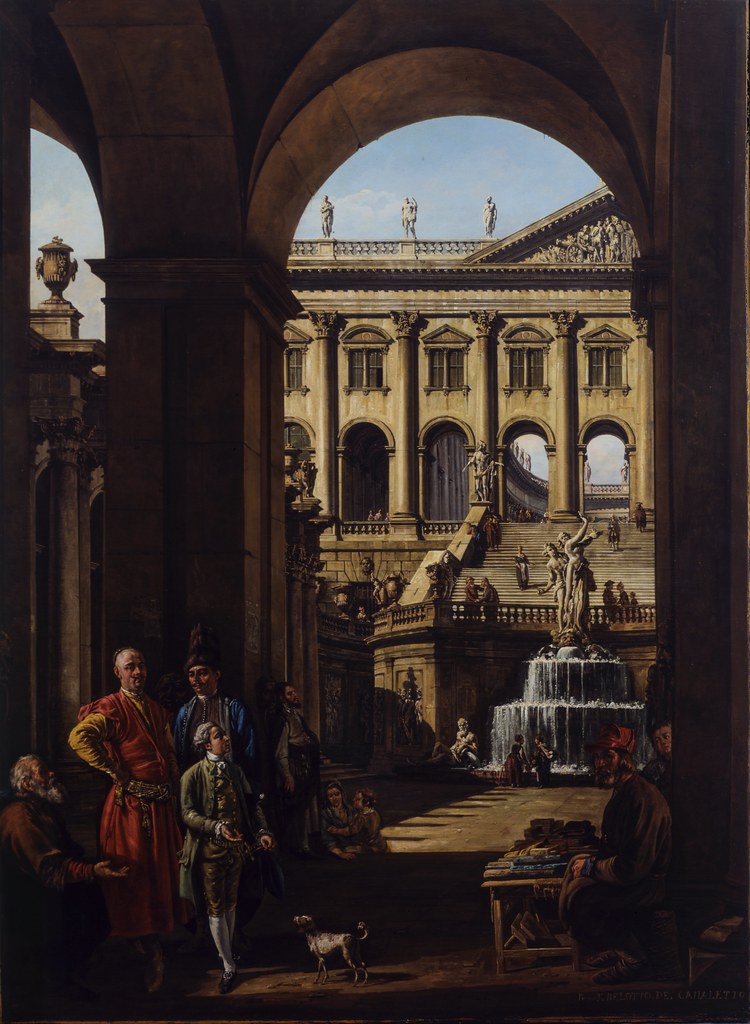Georg Christoph Wagenseil (1715-1777)
- Concerto (Es-dur) für Trombone, IGW 69
Performers: Hаns Böttlеr (trombone); Concеntus Musicus Wiеn; Nicolаus Hаrnoncourt (1929-2016, conductor)
---
Austrian composer, keyboard player and teacher. He can be considered one
of the pivotal figures in the development of the Classical style in
Vienna with a compositional career that spanned a period from Fux, his
teacher, to Haydn and W.A. Mozart, for whom he served as a precursor.
Wagenseil’s father and maternal grandfather were functionaries at the
Viennese imperial court. In his teens he began to compose keyboard
pieces and to receive keyboard instruction with the organist of the
Michaelerkirche in Vienna, Adam Weger. His accomplishments brought him
to the attention of the court Kapellmeister, Johann Joseph Fux, who
recommended him for a court scholarship in 1735; for the next three
years he received intensive instruction in keyboard playing,
counterpoint and composition from his sponsor and from Matteo Palotta.
As a result of an enthusiastic endorsement from Fux, Wagenseil was
appointed composer to the court on 6 February 1739, a post he held until
his death. He also served as organist from 1741 to 1750 in the private
chapel of Empress Elisabeth Christine (widow of Charles VI), and in 1749
became Hofklaviermeister to the imperial archduchesses. To the latter
he dedicated four sets of divertimentos, which were engraved and issued
as opp.1-4 by Bernardi of Vienna (1753-63). Wagenseil travelled to
Venice in 1745 to supervise the production of his first opera,
Ariodante, and in 1759-60 he was in Milan for a performance of Demetrio.
In the mid-1750s uncommonly generous publication privileges granted by
Parisian printers brought about a flood of instrumental compositions,
particularly symphonies, which raised him to international prominence,
and which were undoubtedly responsible for Burney’s high opinion of him.
Among those acquainted with his music was the young Mozart, who played
one of Wagenseil’s concertos before Maria Theresa in 1762 and several
keyboard pieces at the English court in 1764. Haydn was likewise
familiar both with numerous instrumental works, as entries in the
so-called Quartbuch show, and with Wagenseil’s operas, which found their
way to Eisenstadt. Wagenseil was also renowned as a keyboard virtuoso,
and elicited the highest praise from contemporaries such as C.F.D.
Schubart (who remarked that Wagenseil ‘played with extraordinary
expressive power and was capable of improvising a fugue with great
thoroughness’). But from about 1765 steadily worsening lameness and an
attack of gout which affected his left hand curtailed his activities at
court and eventually confined him to his quarters where, according to
Burney, who visited him on several occasions, he continued to compose
and to teach. Among Wagenseil’s pupils were Leopold Hofmann, J.A.
Štěpán, F.X. Dušek, Johann Gallus-Mederitsch, G.A. Matielli, P. le Roy,
the brothers Franz and Anton Teyber, and J.B. Schenk. The last, who
began instruction in 1774, provided in his autobiography a detailed
account of his mentor’s teaching methods which, not surprisingly, were
based on Fux (a legacy Schenk was then to transmit to Beethoven later in
the century) but which were also remarkable for their time in drawing
on Handel and Bach.




